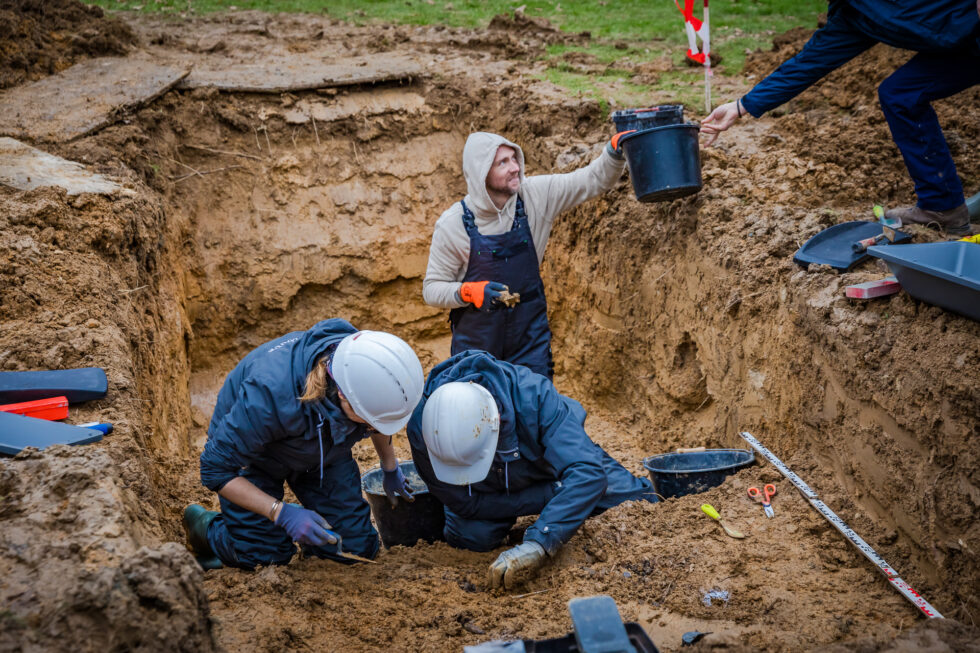
Working at the site of a mass grave in Normandy, France, in December 2023, UW Oshkosh associate professor Jordan Karsten hands off a bucket containing bones to be submitted for DNA analysis. Photo courtesy Anibas Photography
Jordan Karsten, the University of Wisconsin Oshkosh anthropologist known for his work identifying human remains and helping police with “cold” cases, has helped identify an American soldier who disappeared in Normandy during WWII.
Karsten was part of a team that worked with the German War Graves Commission and Israeli nonprofits to search for the burial of missing in action (MIA) soldier, 1st Lt. Nathan Baskind of Pennsylvania, who served in Company C, 899th Tank Destroyer Battalion.
Baskind, who was ambushed with another soldier while they scouted an area in a jeep ahead of their unit, was thought to be dead. When U.S. troops searched the area later that day, June 23, 1944, there was no trace of Baskind, and he was reported missing, according to the Defense POW/MIA Accounting Agency records.
After the war, it was learned through German records that Baskind had been captured and died of his wounds at a hospital near Cherbourg, France. He was buried in a military mass grave. While disinterring the grave in 1957, the German War Graves Commission, found one of Baskind’s identification tags and portions of American military clothing. Remains in the grave were re-interred at the Marigny German War Cemetery.
Karsten was part of the Operation Benjamin team that worked last year to search for the burial of Baskind. The organization works to identify Jewish American World War I and World War II soldiers mistakenly buried under Latin crosses. Family members wanted him buried under a Jewish star and to have a ceremony with a rabbi.
“After analyzing the skeletal remains, I selected bones that I believed were consistent with the remains of Baskind for genetic testing out of over 20 individuals,” Karsten said. “With a little luck, we were able to identify his remains.”
Earlier this year, they learned that a U.S. laboratory had isolated and identified Baskind’s remains. To verify the discovery, scientists from the Armed Forces Medical Examiner System reviewed and confirmed the DNA analysis that was used to make the identification. The identification was announced officially last month by the Defense POW/MIA Accounting Agency.
Karsten said Baskind’s family was notified, and he will be buried June 23―80 years from the day he died in battle. The ceremony will include full military honors at the American Cemetery in Normandy.
Karsten called his role a “real-world application” of anthropology.
“I think the work we did to find and identify Lt. Baskind demonstrates the usefulness of an anthropology degree,” he said. “The analytical work we can provide with our specialized training allows us to contribute to work where missing war heroes can be identified and returned to their family.”
Karsten said anthropology can be applied in ways where it can play a role in solving practical problems.
“For students who are interested in this type of work, they should consider an anthropology major or minor,” Karsten said.
Written by Laurie Schlosser
Link to original story: https://www.uwosh.edu/today/123930/uwo-anthropologist-helps-id-american-wwii-soldier-in-german-mass-grave/
